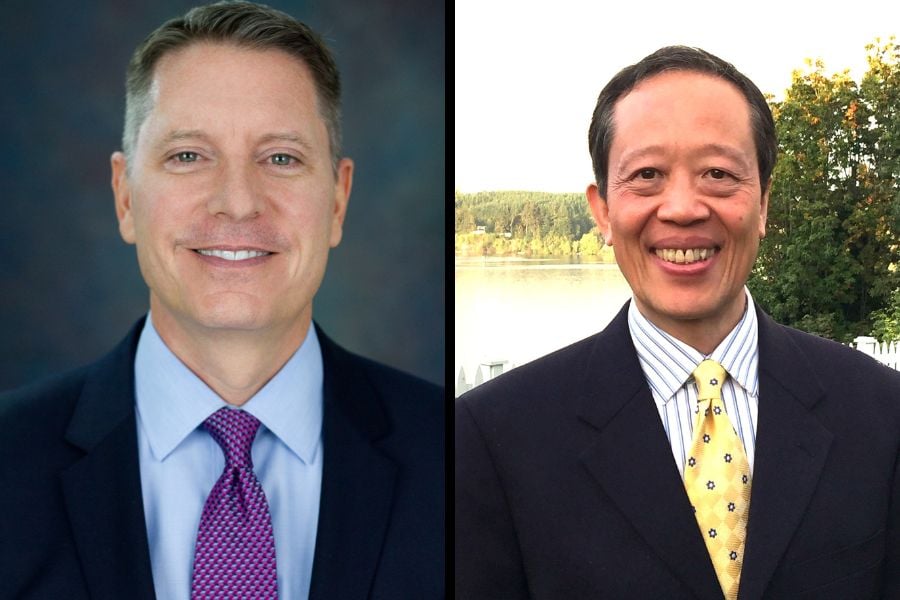

While the number of employees that would be affected by the Department of Government Efficiency's cost-cutting wasn't immediately clear in early February, one thing was obvious to Jon Dauphine as soon as news of layoffs first started capturing headlines.
"This is the kind of moment when people really turn either to their existing financial advisor or try to get some just-in-time advice," says Dauphine, CEO at the Foundation for Financial Planning, a nonprofit dedicated to the advancement of pro bono financial planning.
According to Dauphine, the foundation wasted little time connecting with CFP Board, one of its main partners. Karen Schaefer, a former chair of CFP Board and a major advocate of pro bono planning, is also an expert on the nuances of planning for federal workers – one Barron's profile from mid-March reports her having 40 years' experience doing that work – which made getting her involved a "no-brainer."
Over the past two Thursdays, CFP Board has led free webinars to help address newly unemployed federal employees' need for financial advice. The first, held on March 20, was aimed at orienting CFP professionals with vital knowledge on the Federal Retirement System, Federal Group Life Insurance, the Thrift Savings Plan, and other benefits specific to those government employees.
"Karen was able to give advisors pointers on how to do a very structured, hour-long meeting so they could really help federal employees in a fairly brief period of time, but in a substantial way," Dauphine says.
The second webinar, held last Thursday, offered guidance to the federal workers themselves. Aside from Schaeffer, the well-attended virtual event's panelists included Tammy Flanagan, the founder and principal retirement specialist at Retire Federal, along with Washington Post personal finance columnist Michelle Singletary.
Out of roughly 2,600 registrants who registered within a week, Dauphine says more than 1,200 advisors went through CFP Board's federal employee planning course. That's well above the signup rate of 600 advisors for a typical webinar after roughly a month of marketing.
"We really saw the interest was off the charts," Dauphine says.
Many of those planning professionals have agreed to offer their services for a reduced fee. A considerable number have also agreed to provide advice on a fully pro bono basis.
Kevin Lam, the founder and financial planner at RIA firm Age Wisely Financial, is offering services at a reduced fee. His pro bono planning experience includes nonprofits for widows, families battling cancer, and former convicts who were freed after exonerating evidence showed they were wrongly imprisoned.
"The systems that the federal employees have are different," Lam says. "There are major differences between their systems and the regular Medicare and savings systems everyone else has."
According to Lam, getting to grips with federal workers' financial planning will be a steep learning curve for himself as well as the vast majority of planners.
"Knowing my colleagues and their dedication, that should not be a problem," he says.
He was also quick to acknowledge the tremendous uncertainty federal workers are going through.
Until now, getting a read on exactly how many federal workers have been impacted is difficult. As of March 14, one tracker by Newsweek, which relies on its own reporting along with other outlets', estimated 222,000 job cuts as of mid-March. That includes more than 6,000 employees reportedly let go from the IRS and around 200 workers from the Consumer Financial Protection Bureau.
In a late February statement, the Social Security Administration announced a broad reorganization effort that could affect as many as 30,000 workers. More recently, reports have come out of a sharp personnel reduction at the Securities and Exchange Commission, where as many as 700 employees reportedly accepted $50,000 buyout offers that were announced earlier in March.
"A lot of people are being affected. A lot of these people don't currently have a financial advisor to help them," Dauphine from FFP says. "These are serious decisions these families have to make, and it's about helping empower them to do that."
"I expect that one of the major ways we financial planners can help is to focus on the personal side, on the qualitative side, on the human side, to be there to listen and to offer refuge and calm," Lam added. "There's lots of good people out there who are willing to help and very capable to help ... [The impacted workers] don't have to go through this alone and try to figure it all out themselves."

It's a showdown for the ages as wealth managers assess its impact on client portfolios.

CEO Ritik Malhotra is leveraging Savvy Wealth's Fidelity partnership in offers to Commonwealth advisors, alongside “Acquisition Relief Boxes” filled with cookies, brownies, and aspirin.

Fraud losses among Americans 60 and older surged 43 percent in 2024, led by investment schemes involving crypto and social manipulation.

The alternatives giant's new unit, led by a 17-year veteran, will tap into four areas worth an estimated $60 trillion.

"It's like a soap opera," says one senior industry executive.
RIAs face rising regulatory pressure in 2025. Forward-looking firms are responding with embedded technology, not more paperwork.
As inheritances are set to reshape client portfolios and next-gen heirs demand digital-first experiences, firms are retooling their wealth tech stacks and succession models in real time.
